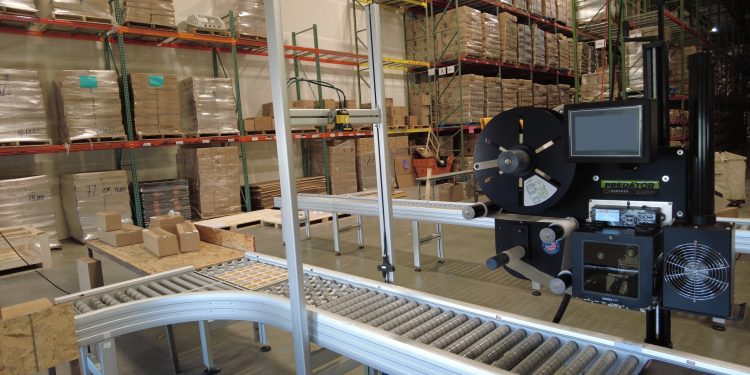Optimize the Final 100 Feet

Efficient SLAM operations depend on software integration.
Your shipping, labeling, applying, and manifesting (SLAM) area is a critical component to your overall operations. Known as the final 100 feet, SLAM is the final stop before your orders make their way out the door. The more efficient your SLAM line, the more efficient your operations. It’s essential, then, that you understand how your SLAM software can integrate with your WMS, order database and TMS to communicate with the multiple carriers with whom you partner.
How that works may look different for every company. However, often your SLAM equipment and software will integrate with multiple carriers and their software systems– UPS, FedEx, and the like each have their own. This may be via your company’s TMS or directly from the SLAM software to the carriers’ software. The operations will flow from a license plate scan, up to the TMS, and then out to the carrier. The carrier, in turn, will specify the details of the label you need to print, apply, and manifest.
Generally, the easiest path is for your SLAM to integrate with a third-party parcel TMS software that is designed to handle rate-shopping to multiple carriers. This allows you to seamlessly switch back and forth with the various carriers to achieve the best parcel rates. Without that integration, this step in the process can get clunky and complicated. You also need to consider security levels when making determinations on with whom and how you integrate. Also important is software that provides for appropriate dimensional weight prior to printing and applying labels, so that you can avoid potential chargebacks from carriers.
Another piece of the software integration equation is the ability for SLAM equipment to monitor itself when it comes to maintenance. If the print head is nearing the end of its life cycle, for instance, having software that is integrated can signal to the WMS that preventative maintenance is in order. This saves your maintenance team the time and effort of reacting to a breakdown. Instead, you’ll have the ability to schedule maintenance to prevent downtime. The software captures usage time, and at a certain point, will push that information forward. The software allows a thorough look through the cycle time and utilization and helps understand a machine’s status and upcoming maintenance needs. Moving forward, these tasks will be integrated with AI and machine learning,
SLAM integration doesn’t end there, however. The equipment and its software can also integrate directly to a packing machine. So, if you have a label printer ready, you can provide it information from the WMS, or directly to the printer integrated into the packing machine.
In general, this can be a straightforward process. As you install your printing system you can send your provider a current file to test. There may be coding that needs to be adjusted in the system, but usually your partner will ensure a smooth process from software to printer. When optimized, your time from scan to shipping label can be a matter of seconds.
No matter how automated your SLAM line currently is, seamless integration between software is essential to smooth SLAM operations.
To learn more about MHI’s SLAM industry group: www.mhi.org/slam
More information about Scanning, Labeling, Applying, Manifesting:
Using Peak Season for Next Season
Podcast: Elevating Order Fulfillment: VRCs & SLAM Efficiency in the Modern Warehouse
How SLAM Saves on Shipping Costs
Prevent Chargebacks Via SLAM Equipment
Why SLAM Should Include Dimensioning Equipment



